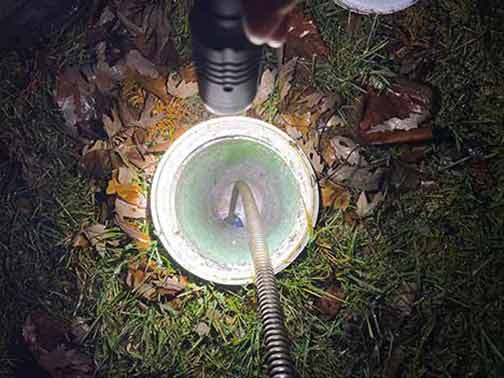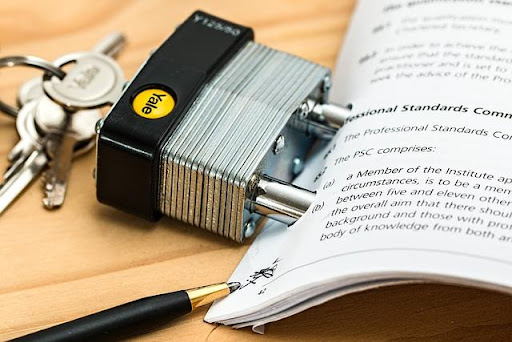
Sewer-rodding is a drain-cleaning method that is highly effective for dealing with stubborn clogs and removing debris from hard-to-reach areas of the home and commercial drains. Sewer-rodding utilizes sets of flexible rods that are guided into the drain to remove the clogs.
How does sewer rodding work?
Sewer-rodding equipment comprises a sewer-rodding machine, a roll of flexible metal rods and a metal cutting head. The cutting head is attached to the end of the rod before it is inserted through a manhole, cleanout, sink opening and any opening from which the drains can be accessed.
The sewer-rodding machine feeds the rod into the drainpipe, while simultaneously spinning the cutting head to cut through any blockages inside the pipes. The size and type of cutting head used depend on the diameter of the pipe being cleaned and the severity of the clog.
Sewer-rodding works for small and large pipes in residential, commercial and industrial drain systems. You can use this method for simple jobs like cleaning a sink or shower drain and for more-complex drain-cleaning operations like clearing blockages from your main sewer line.
What are the signs that you may need a sewer rodding service?
If you are seeing any of the following signs in your home, MTD Management experts advises you should hire a sewer-rodding service:
- Several drains in the home are slow at the same time
- Frequent backups in your toilets, showers, or tubs
- Unexpected reactions in other drains when you use the toilet, shower or dishwasher.
- Sewer odors inside or around the home
Given that sewer rodding involves inserting a metal rod into your drainpipes, is it safe? Sewer-rodding is a safe method for cleaning your drains, but a lot depends on the quality of the sewer rodding service you hire. What should you do when hiring a sewer rodding service?

Is the company licensed by the city? Is their license up-to-date? Are they recognized members of the local chapter of their professional body?
How to choose the appropriate sewer rodding service
How long have they been in business?
You only want to talk to plumbers that have been active in your locality for a long time. It is hard to remain in business in a locality where everyone knows you unless your services are good. Do your best to avoid new companies.
Licensing and certifications
Is the company licensed by the city? Is their license up-to-date? Are they recognized members of the local chapter of their professional body? What is their relationship with local suppliers and contractors?
References and reviews
One reason to limit yourself to a local service is it is easier to get information about the company. Ask the plumber for a list of recent customers; these should be people who live within the area. Also, check online reviews and ratings. Look out for negative reviews and how the company responds.
Their team and equipment
Who are the owners of the company, and what are their qualifications? How many employees do they have? Do they have more full-time staff than part-time workers, or vice-versa? Do they do background checks for their staff?
Ask about their methods
Will they physically inspect your drains before giving you an estimate for the job, or will they give you an estimate over the phone? When they visit your home, will they sewer camera inspection service as part of their processes for assessing the problem?
Ask for a transparent estimate
Getting estimates from several companies will give you a basis for comparing different sewer-rodding services. If they are a reputable company, they should have no problems with providing an estimate. Study the estimate to see if it is comprehensive and transparent.
Are they insured and bonded?
A reputable sewer-rodding company will have enough insurance to shield you from personal liability if one of their workers is injured while working in your home. They should also have adequate property insurance to cover possible damage to your home.
Do they offer a Guarantee?
How long can you expect your drains to stay clean after sewer rodding? If there is a problem soon after the drain is cleaned, what will the company do? Will you be required to pay a second time to have the drain cleaned again? How long does the guarantee last?

Pay close attention to how a sewer-rodding service responds to your questions. Are they abrupt with their answers or unwilling to provide details?
Request a sample of the contract
Ask if they are willing to give you a written contract. A reputable sewer-rodding service will not have problems with this. They should also be willing to provide a sample of the contract. When you get the sample contract, look for the exit clause and what happens if something goes wrong during the job.
How responsive are they?
Pay close attention to how a sewer-rodding service responds to your questions. Are they abrupt with their answers or unwilling to provide details? Do they reply to emails and chats promptly? Do you feel comfortable talking with them?
Finally, to make it easier to hire the best sewer rodding service, do the above steps simultaneously with at least three companies.